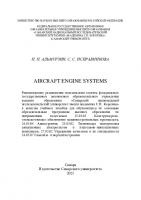UNMANNED AIRCRAFT SYSTEMS ROADMAP 2005-2030
UNMANNED AIRCRAFT SYSTEMS ROADMAP 2005-2030 (ENglish) Главная,ИНФОРМАЦИЯ UNMANNED AIRCRAFT SYSTEMS ROADMAP 2005-2030 (EN
366 46 6MB
English Pages 213
Recommend Papers
File loading please wait...
Citation preview
UAS ROADMAP 2005
UAS ROADMAP 2005
UAS ROADMAP 2005
EXECUTIVE SUMMARY As the Global War on Terrorism (GWOT) enters its fourth year, the contributions of unmanned aircraft (UA)* in sorties, hours, and expanded roles continue to increase. As of September 2004, some twenty types of coalition UA, large and small, have flown over 100,000 total flight hours in support of Operation ENDURING FREEDOM (OEF) and Operation IRAQI FREEDOM (OIF). Their once reconnaissanceonly role is now shared with strike, force protection, and signals collection, and, in doing so, have helped reduce the complexity and time lag in the sensor-to-shooter chain for acting on “actionable intelligence.” UA systems (UAS) continue to expand, encompassing a broad range of mission capabilities. These diverse systems range in cost from a few thousand dollars to tens of millions of dollars, and range in capability from Micro Air Vehicles (MAV) weighing less than one pound to aircraft weighing over 40,000 pounds. UA, and unmanned systems in general, are changing the conduct of military operations in the GWOT by providing unrelenting pursuit without offering the terrorist a high value target or a potential captive. As the Department of Defense (DoD) develops and employs an increasingly sophisticated force of unmanned systems, including UA over the next 25 years (2005 to 2030), technologists, acquisition officials, and operational planners require a clear, coordinated plan for the evolution and transition of this capability. The overarching goal of this Roadmap, in following the Strategic Planning Guidance (SPG), is to guide the Military Departments and defense agencies toward a logical, systematic migration of mission capabilities to this new class of military tools. The goal is to address the most urgent mission needs that are supported both technologically and operationally by various UAS. Some DoD missions can be supported by the current state of the art in unmanned technology where the capabilities of current or near-term assets are sufficient and the risk to DoD members is relatively low. Other mission areas, however, are in urgent need of additional capability and present high risk to aircraft crews. These mission areas, highlighted in this Roadmap, will receive significant near-term effort by the Department. Each Service is developing a wide range of UAS capabilities, and the Office of the Secretary of Defense (OSD) is responsible for ensuring these capabilities support the Department’s larger goals of fielding transformational capabilities, establishing joint standards, and controlling costs. OSD is establishing the following broad goals to achieve key UAS capabilities. The organizations in parenthesis are those which must cooperatively engage to attain the stated goal. 1.
Develop and operationally assess for potential fielding, a joint unmanned combat aircraft system capable of performing Suppression of Enemy Air Defenses (SEAD)/Strike/Electronic Attack/Intelligence Surveillance, and Reconnaissance (ISR) in high threat environments. (OSD, USAF, USN)
2.
Field secure Common Data Link (CDL) communications systems for aircraft control and sensor product data distribution for all tactical and larger UA, with improved capability to prevent interception, interference, jamming, and hijacking. Migrate to Joint Tactical Radio System (JTRS)/Software Communications Architecture (SCA) compliant capability when available. (OSD, USA,USAF, USN, USMC)
3.
Ensure compliance with the existing DoD/Intelligence Community Motion Imagery Standards Board metadata standard and profiles for all full motion video capable UA. Operationally demonstrate and
*
This roadmap adopts the terminology unmanned aircraft (UA), rather than unmanned aerial vehicle (UAV), when referring to the flying component of an unmanned aircraft system. Unmanned Aircraft Systems (UAS) are the focus of this roadmap. This change in terminology more clearly emphasizes that the aircraft is only one component of the system, and is in line with the Federal Aviation Administration’s decision to treat “UAVs” as aircraft for regulatory purposes.
EXECUTIVE SUMMARY – Page i
UAS ROADMAP 2005
field near real time (
![Unmanned Aircraft Systems [1 ed.]
9781118866467, 9781118866450](https://ebin.pub/img/200x200/unmanned-aircraft-systems-1nbsped-9781118866467-9781118866450.jpg)
![Introduction to unmanned aircraft systems [3 ed.]
9780367366599, 0367366592](https://ebin.pub/img/200x200/introduction-to-unmanned-aircraft-systems-3nbsped-9780367366599-0367366592.jpg)
![Introduction to Unmanned Aircraft Systems [3rd ed.]](https://ebin.pub/img/200x200/introduction-to-unmanned-aircraft-systems-3rdnbsped.jpg)
![Unmanned Aircraft Systems: International Symposium On Unmanned Aerial Vehicles, UAV'08 [1 ed.]
1402091362, 9781402091360](https://ebin.pub/img/200x200/unmanned-aircraft-systems-international-symposium-on-unmanned-aerial-vehicles-uav08-1nbsped-1402091362-9781402091360.jpg)






